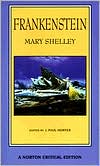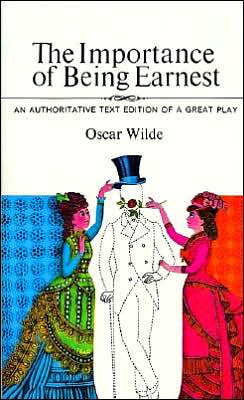The Brothers Grimm: From Enchanted Forests to the Modern World
Most of the fairy tales that we grew up with we know thanks to the Brothers Grimm. Jack Zipes, one of the more astute critics of fairy tales, explores the romantic myth of the brothers as wandering scholars, who gathered "authentic" tales from the peasantry. Bringing to bear his own critical expertise as well and new biographical information, Zipes examines the interaction between the Grimms' lives and their work. He reveals the Grimms' personal struggle to overcome social prejudice and...
Search in google:
Zipes (German, U. of Minnesota) has substantially revised his study of the Brothers Grimm, their lives, work, and the subsequent, often radical, re-interpretation of the fairy tales for which they're known. The fairy tales are described, with attention to their origins and the psychological and social interpretations of the Grimms and later interpreters. A new section discusses the legacy of the Brothers Grimm in Germany since the Berlin wall came down in 1989. Annotation (c)2003 Book News, Inc., Portland, ORMeredith Kiger, Ph.D. - Children's LiteratureThis scholarly volume is an updated version by the author, a noted fairy tale and Grimm brothers' authority. According to the author, "Fairy tales in their oral, literary, and mass-mediated forms have enabled children and adults to conceive strategies for placing themselves in the world and grasping events around them (pg. 62)." Is there anyone in this country who has not been instructed or entertained through the use of fairytales? We have the Grimm brothers of Germany to thank for that. This complex book on Jacob and Wilhelm Grimm critically reviews their scholarly work in collecting and rewriting the peasant tales of old Germany as well as takes a comparative look at original versus later versions. Critical responses to the tales and the Grimm's methods are discussed both by the author and other well-known scholars both here and abroad. The historical account of their lives is fascinating, as is some of the criticism, especially the declining popularity of the tales due to their sexist content. The lengthy comparison of individual tales is monotonous at times, but will appeal to those involved in scholarly work. The commercial reworking of tales by Disney and others in the media industry makes interesting reading and food for thought as these stories of good and evil are reworked for young children's consumption even today. The small print requires perseverance, but overall it is an interesting examination of stories that we have come to adopt as part of our cultural heritage. 2002 (orig. 1998), Palgrave Macmillan, Ages Adult.
Preface to the 2002 EditionPreface to the 1988 Edition1Once There Were Two Brothers Named Grimm: A Reintroduction12The Origins and Reception of the Tales253Exploring Historical Paths654From Odysseus to Tom Thumb and Other Cunning Heroes: Speculations about the Entrepreneurial Spirit915The German Obsession with Fairy Tales1076Henri Pourrat and the Tradition of Perrault and the Brothers Grimm1357Recent Psychological Approaches with Some Questions about the Abuse of Children1538Semantic Shifts of Power in Folk and Fairy Tales : Cinderella and the Consequences1879Fairy Tale as Myth/Myth as Fairy Tale: The Immortality of Sleeping Beauty and Storytelling20710The Struggle for the Grimms' Throne: The Legacy of the Grimms' Tales in East and West Germany since 1945231Notes271Bibliography297Index323
\ From the Publisher"Jack Zipes knows the world of the Grimms better than anyone, and his provocative and illuminating book has already made waves in the folklore and children's literature worlds in its earlier incarnation." — Jane Yolen, author of Touch Magic \ "Jack Zipes does a marvelous job of digging out the way the stories were set up." — The Boston Globe\ "Zipes' eloquent and persuasive scholarship is enough to recommend The Brothers Grimm, but it is his witty and trenchant readings of the tales that will delight even the most hardened anti-Grimm reader." — The Globe and Mail\ "...this new edition of his classic study of the Brothers Grimm (1988) [is] especially welcome." — Library Journal\ \ \ \ \ \ Children's LiteratureThis scholarly volume is an updated version by the author, a noted fairy tale and Grimm brothers' authority. According to the author, "Fairy tales in their oral, literary, and mass-mediated forms have enabled children and adults to conceive strategies for placing themselves in the world and grasping events around them (pg. 62)." Is there anyone in this country who has not been instructed or entertained through the use of fairytales? We have the Grimm brothers of Germany to thank for that. This complex book on Jacob and Wilhelm Grimm critically reviews their scholarly work in collecting and rewriting the peasant tales of old Germany as well as takes a comparative look at original versus later versions. Critical responses to the tales and the Grimm's methods are discussed both by the author and other well-known scholars both here and abroad. The historical account of their lives is fascinating, as is some of the criticism, especially the declining popularity of the tales due to their sexist content. The lengthy comparison of individual tales is monotonous at times, but will appeal to those involved in scholarly work. The commercial reworking of tales by Disney and others in the media industry makes interesting reading and food for thought as these stories of good and evil are reworked for young children's consumption even today. The small print requires perseverance, but overall it is an interesting examination of stories that we have come to adopt as part of our cultural heritage. 2002 (orig. 1998), Palgrave Macmillan, Ages Adult. \ — Meredith Kiger, Ph.D.\ \ \ Library JournalZipes is probably the leading American authority on the fairy tale, which makes this new edition of his classic study of the Brothers Grimm (1988) especially welcome. Zipes has significantly revised and expanded his book, responding both to its earlier critics and to the wealth of new work on the Grimms to come out of East Germany since the fall of the Berlin Wall. He is concerned with both the artistry and the ideology of the tales. While agreeing that the Grimms often transformed their tales to reflect the bourgeois values of their world, Zipes wishes to avoid simplistic readings, exploring the complexity of what such values actually meant. At the same time, Zipes is interested in their later reception and appropriation, including the efforts of Disney. His new chapter on the legacy of the Grimms in East and West Germany is especially illuminating. Highly recommended.-T.L. Cooksey, Armstrong Atlantic State Univ., Savannah, GA\ \ \ \ \ Library JournalZipes consolidates the evidence that the Grimms gathered their tales from middle-class women rather than peasants. The tales had many European analogues, and the brothers synthesized numerous versions into their highly literary productions. They often used the tales to explore problems of family tension and social injustice as well as to reinforce bourgeois values. Both here and in his Fairy Tales and the Art of Subversion (Methuen, 1985), Zipes discusses a crucial valuethat of male self-mastery. With its penetrating comments on fairy tales and psychoanalysis, the French fairy tale tradition, and fairy tale illustration, as well as its rich historical treatment of the Grimms themselves, this book belongs in all literature collections. Barbara J. Dunlap, City Coll., CUNY\ \








